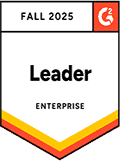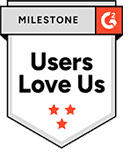You did it! You made the smart decision to purchase a lease accounting solution to help you ensure compliance with the latest accounting guidelines and reporting requirements.
Now comes the exciting — and somewhat intimidating — part: the process of lease accounting implementation.
You’re probably wondering where to begin. So, let’s start by taking a look at the basic steps that are vital to implementing a lease accounting platform.
Basic Steps to Platform Implementation
Visual Lease has created best practices for platform implementation. The steps in this process will guide you through your own implementation project, for lease accounting or virtually any lease software solution.
- Analysis: evaluating the requirements of the business
- Configuration: setting up the platform to meet the identified requirements
- Conversion: compiling lease data and migrating data into the platform
- Validation: ensuring that the platform as set up meets the business requirements
- Production: going live — this is where you actually start using the platform
Wrapped around all of these activities is training, the step in which users are educated on how to work with the platform. Unlike the steps above, which follow a progression, training should begin on day 1 and continue throughout the implementation process, alongside the other steps.
How to prepare for lease accounting implementation
Having helped more than 700 organizations implement their lease accounting platforms, Visual Lease knows what it takes to make the process run smoothly, so that businesses can start reaping the benefits as quickly as possible.
The following are 7 essential tasks that will help you get a jump on your lease accounting implementation project.
1. Take a lease inventory.
The first step is to locate and list all the leases that the business holds — checking finance, HR, operational groups, legal, IT, procurement, and other areas.
- Reconcile lists across the business.
- Identify the tools that are holding lease information. Is it in a Microsoft Access database, Excel, or some other spreadsheet application?
- Identify any embedded leases. For example, check your service contracts to see if they give you control of an asset. If so, those contracts are considered leases.
- Identify the impact of any bank covenants.
2. Determine what kind of lease data to track.
You want to identify which data points are important to the business — and which ones are not.
- Select expedients as soon as you can, so you know which data points you need to capture.
- Work with the different departments to identify data points for future operational needs — helping you pinpoint which lease information is important to those stakeholders.
- Assess any overlapping data — identifying which source is the best one, so you can streamline the process of compiling lease data.
- Determine how data points affect other data points — identifying which data points are part of other data sets, to consolidate and simplify data collection.
- Test data integrity and fix errors ASAP. You want to be sure everything is accurate and up to date before you migrate the data.
3. Build a strong team.
The most effective lease accounting implementation team is one that is representative of all the lease stakeholders across the business.
- Identify the individuals who are managing leased assets.
- Define everyone’s role and responsibilities in the implementation project.
- Assign a Project Manager. Doing so helps to promote team accountability and organization.
- Assign various Power Users for the platform — so the Project Manager or other leader has backup.
- Determine if you need an Accounting Advisor to fill project gaps or supplement your internal team.
- Engage everyone when implementing best practices — including the accounting team, advisors, and power users.
4. Educate your team.
Like training, education is an ongoing and vital part of lease accounting (or any) implementation.
- Become familiar with guidance for lease accounting standards.
- Determine how guidance will impact your lease portfolio.
- Build test scenarios.
- Ask your Accounting Advisor for help as needed.
- Take platform training ASAP. The earlier you begin training, the more smoothly the implementation project will go.
5. Build a realistic timeline.
The process of identifying leases and compiling lease data can take a lot longer than you think it will. So, it’s smart to create a timeline that takes the following recommendations into account.
- Evaluate potential roadblocks and issues that may cause delays.
- Determine internal meetings that will be needed outside of platform implementation meetings, such as planning meetings for individual teams or departments.
- Estimate the time needed for project segments, such as the time to inventory leases and deg fine data points.
- Set a deadline ahead of your final deadline. This gives you a cushion of some extra time in the event of unexpected delays or setbacks.
6. Sharpen your communication skills.
Sharpening and deploying your best communications skills — and encouraging your team to do the same — will go a long way in helping everyone stay engaged and positive throughout platform implementation.
- Actively listen on implementation calls, to make sure you are getting all the details you need.
- Ask questions. Remember, there is no such thing as a dumb question.
- Be honest about how you feel. Sharing how you feel the implementation is going will help to encourage the team or help them make improvements as needed.
- Provide feedback to strengthen configuration.
- Meet internally to make decisions as needed.
- Stay organized.
- Involve your Accounting Advisor and other partners in calls and meetings.
7. Get started NOW!
We can’t say it enough: preparing for lease accounting implementation is a long and often complex process. So, the sooner you get started, the better!
- Have time on your side. Again, if possible, set a deadline with a cushion (some extra time) built in.
- Don’t be tied to the order of these 7 tasks. They are interrelated and often overlap, so it is fine — in fact, it’s good — to do multiple tasks at the same time.
- Ask your peers about their implementation experiences. You can learn from their good experiences, as well as from their mistakes.
- Make sure you allow enough time to do it right! A failed implementation is far more expensive and disruptive than taking the time up front to get the job done correctly.
Conducting a Post-Implementation Review
Once your lease accounting software implementation is complete, you may want to conduct a post-implementation review to evaluate the success of the project and identify any areas for improvement. This review should focus on whether the system is functioning as expected, meeting your business requirements, and delivering the desired results.
Start by gathering feedback from key stakeholders, including the implementation team, finance department, IT, and any other users of the platform. Ask them about their experience with the system and whether the software meets their needs. Any challenges or issues they faced during the implementation process should be noted for the future.
You also want to assess the technical performance of the platform. Are there any integration issues with other systems? Is the data flowing smoothly? Are reports being generated accurately? If you encounter any problems, now is the time to address them to avoid any disruptions later.
Use this review to measure the overall impact of the software on your business processes. Are you seeing improvements in efficiency, data management, and reporting? If not, it may be necessary to revisit configuration settings or provide additional training.
Avoiding Common Mistakes When Implementing Lease Accounting Software
Implementing lease accounting software can be a complex process with many moving parts. Avoiding these common mistakes will help ensure a smoother transition and better long-term results:
- Failing to Plan Efficiently: One of the biggest mistakes is not setting a clear implementation plan. Without a detailed roadmap, including timelines, milestones, and team responsibilities, the process can quickly become disorganized.
- Underestimating Data Migration Challenges: Migrating lease data is often more complicated than expected. Ensure you review your data thoroughly for accuracy, completeness, and formatting before migrating it to the new platform to avoid issues during the transition.
- Not Allocating Enough Resources: Many businesses underestimate the time and personnel required for a successful implementation. Make sure you have a dedicated project manager and team with enough resources to focus on the implementation.
- Skipping or Rushing the Testing Phase: Skipping or rushing the testing phase can lead to undetected issues that impact the software’s performance post-launch. Always test the system thoroughly with sample data to ensure it functions correctly.
Neglecting Training and Support: A common mistake is not investing enough time in training users on how to use the new platform. Ensure that everyone who will use the system is trained properly to maximize the benefits of the software.
Need more help?
Selecting the right lease accounting software for your business is important and implementing it can be a long, complicated process to complete with your team alone. If you’re looking for assistance with implementing Visual Lease’s platform, contact our team today. Visual Lease is not only happy to help with your lease accounting implementation — it’s an important part of our business.























